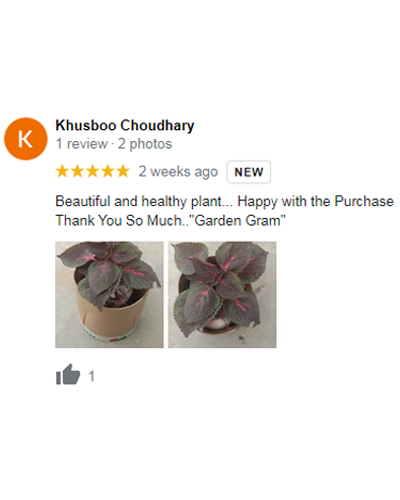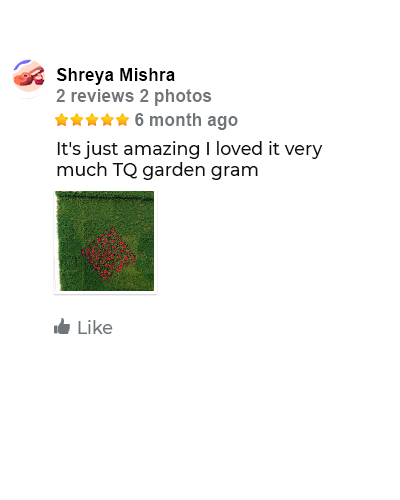Plant Symbolism: Discovering the Meanings Behind Different Plants
Welcome, everyone, to our exploration of plant symbolism! Have you ever wondered why certain plants hold special meanings in different cultures? Well, today we're going to dive into that magical world and learn all about the hidden messages behind our favorite plants. So, grab a cup of tea and get cozy as we uncover the fascinating stories behind nature's treasures!
Let's take a stroll through history and discover how plants have been symbols of meaning and significance for centuries!
⇝ Origins of Plant Symbolism in Ancient Cultures
Imagine wandering through the ancient civilizations of Egypt, Greece, and Rome, where plants weren't just greenery but held special meanings. For example, the majestic lotus flower in Egypt symbolized rebirth and purity, while the olive tree in Greece was a symbol of peace and prosperity. Even the humble fern, with its delicate fronds, was believed to represent growth and protection.
Evolution of Plant Symbolism Through History
Fast forward to the medieval and Renaissance periods, where scholars and artists were captivated by the symbolism of plants. The rose, with its velvety petals, became a timeless symbol of love and passion, while the sunflower, with its cheerful demeanor, represented happiness and adoration. In the Victorian era, people communicated through the "Language of Flowers," where each bloom conveyed secret messages. For instance, a lily symbolizes purity and innocence, perfect for expressing heartfelt sentiments.
⇝ Popular Symbolic Plants
Plants aren't just pretty green things in pots; they're like nature's storytellers, each carrying its own special meaning. Let's take a stroll through the garden of symbolism and explore the stories behind some of the most iconic plants:
Roses: Love, Passion, and Romance
Ah, the classic rose! It's not just a flower; it's a symbol of love and passion that has captured hearts for centuries. Whether it's a vibrant red rose expressing fiery romance or a soft pink one symbolizing admiration, roses speak the language of love like no other.
Lilies: Purity, Innocence, and Renewal
Imagine a graceful lily blooming in a serene pond – it's a symbol of purity and innocence, a reminder of new beginnings and fresh starts. With its elegant petals and delicate fragrance, the lily whispers tales of purity and the promise of renewal.
Sunflowers: Happiness, Vitality, and Adoration
With their sunny faces and cheery disposition, sunflowers are the epitome of happiness and vitality. Standing tall and proud, they symbolize adoration and loyalty, spreading joy wherever they bloom.
Lotus: Enlightenment, Spirituality, and Rebirth
In the tranquil waters of ancient ponds, the lotus emerges, a symbol of enlightenment and spiritual awakening. Its journey from mud to majestic bloom represents the path to enlightenment and the cycle of rebirth, inspiring seekers of inner peace and wisdom.
Olive Tree: Peace, Harmony, and Prosperity
The sturdy olive tree has stood as a symbol of peace and prosperity for millennia. With its graceful branches and silvery-green leaves, it embodies harmony and abundance, offering a timeless message of hope and unity.
Oak Tree: Strength, Endurance, and Longevity
Majestic and mighty, the oak tree stands as a symbol of strength and endurance. With its deep roots and sturdy trunk, it represents resilience and longevity, reminding us to weather life's storms with courage and fortitude.
Lavender: Serenity, Relaxation, and Healing
Picture fields of fragrant lavender swaying in the breeze – it's the scent of serenity and relaxation, a balm for the soul. With its soothing aroma and calming properties, lavender symbolizes inner peace and healing.
Fern: Growth, Fertility, and Protection
Amidst the lush greenery of the forest floor, ferns unfurl their delicate fronds, symbols of growth and fertility. With their intricate patterns and ancient lineage, ferns evoke a sense of protection and connection to nature's cycles of renewal.
Daisies: Innocence, Purity, and Friendship
Simple yet charming, daisies are symbols of innocence and purity, reminiscent of carefree childhood days spent in sunny meadows. With their cheerful blooms and friendly demeanor, they also represent the enduring bonds of friendship.
Tulips: Declaration of Love, Perfect Love
Tulips are not just springtime beauties; they also convey messages of love and affection. In various cultures, different colored tulips carry specific meanings, with red tulips symbolizing true love and yellow tulips representing cheerful thoughts and sunshine.
Cherry Blossoms: Transience, Renewal, and Beauty
Cherry blossoms, with their fleeting beauty and ephemeral bloom, symbolize the transient nature of life and the beauty of impermanence. In Japanese culture, they represent renewal and the fleeting beauty of life, reminding us to cherish each moment.
Daffodils: New Beginnings, Rebirth, and Hope
With their bright yellow blooms heralding the arrival of spring, daffodils symbolize new beginnings, rebirth, and hope. As the first flowers to emerge after winter's slumber, they bring a sense of optimism and joy to the garden.
Orchids: Elegance, Luxury, and Beauty
Orchids are not just exquisite flowers; they're symbols of elegance, luxury, and beauty. With their stunning blooms and intricate designs, they represent refinement and sophistication, captivating admirers with their allure.
Violets: Modesty, Faithfulness, and Humility
With their delicate petals and sweet fragrance, violets symbolize modesty, faithfulness, and humility. In Victorian times, they were often given as tokens of affection and represented everlasting love and loyalty.
Chrysanthemums: Joy, Optimism, and Longevity
Chrysanthemums, with their vibrant blooms and cheerful colors, symbolize joy, optimism, and longevity. In many cultures, they're associated with happiness and celebration, making them popular flowers for festive occasions and ceremonies.
⇝ Cultural Perspectives
In different parts of the world, plants have unique meanings and stories attached to them. In India, plants have been a part of our cultural fabric for centuries, playing important roles in rituals, traditions, and everyday life. From the sacred Tulsi plant worshipped in Hindu households to the fragrant Jasmine flowers adorning wedding ceremonies, plants hold special significance in Indian culture.
In Western cultures like Europe and North America, plants are often associated with emotions and sentiments. For example, the rose symbolizes love and passion, while the lily represents purity and innocence. On the other hand, in Eastern cultures like Asia and the Middle East, plants are deeply rooted in spiritual and philosophical beliefs. The lotus, revered for its beauty and resilience, symbolizes enlightenment and rebirth in many Eastern traditions.
In indigenous cultures around the world, including those in India, plants are revered for their medicinal properties, spiritual significance, and connection to the natural world. Indigenous communities often have rich botanical knowledge passed down through generations, with plants playing vital roles in ceremonies, healing practices, and daily life.
⇝ Personal Interpretations
In our everyday lives, certain plants hold special meanings that resonate with us on a personal level. Think of it like this: just as each zodiac sign has its unique traits, there are plants that align with our personalities and life journeys. For example, your birth flower might symbolize qualities you admire or aspire to embody, while certain plants associated with your zodiac sign could reflect your inner strengths and characteristics. It's like having a green companion that speaks to your soul, reminding you of your unique essence and journey through life. So, whether you're celebrating a milestone or simply seeking a bit of inspiration, these symbolic plants add a touch of magic to your daily life, serving as gentle reminders of the beauty and meaning found in nature.
⇝ Frequently Asked Questions/ FAQs
1. Which plant is a symbol of love?
The timeless symbol of love is often attributed to the beautiful and romantic rose. With its delicate petals and enchanting fragrance, the rose has been associated with love, passion, and romance for centuries. Whether it's a vibrant red rose symbolizing deep love or a soft pink rose representing admiration and gratitude, this iconic flower continues to captivate hearts around the world.
2. What plant symbolizes new beginnings?
For centuries, the fresh and vibrant sprout of the fern has symbolized new beginnings, growth, and renewal. With its unfurling fronds and resilient nature, the fern represents the promise of a new chapter, making it a perfect symbol for embarking on exciting journeys, starting new ventures, or embracing positive changes in life.
3. Which plant is lucky for home?
One of the most beloved and auspicious plants for the home is the vibrant and lush jade plant. Known for its resilience and ability to thrive in various conditions, the jade plant is believed to bring luck, prosperity, and abundance to the household. Its rounded leaves symbolize wealth and good fortune, making it a popular choice for attracting positive energy and prosperity into the home.
4. Which plant should be kept at the entrance?
A popular choice for adorning entrances and doorways is the majestic and graceful peace lily. With its elegant white blooms and lush foliage, the peace lily symbolizes harmony, purity, and tranquility, creating a welcoming and serene atmosphere at the entrance of your home. Additionally, the peace lily's air-purifying qualities make it a practical and beautiful choice for enhancing indoor air quality right from the moment you step inside.
As we come to the end of our exploration into plant symbolism, let's take a moment to appreciate the beauty and significance of the natural world. By understanding the meanings behind different plants, we can deepen our connection with nature and the messages it has to offer. So, the next time you encounter a plant, whether in your garden or on your travels, take a moment to reflect on its unique story and the symbolism it carries.

















